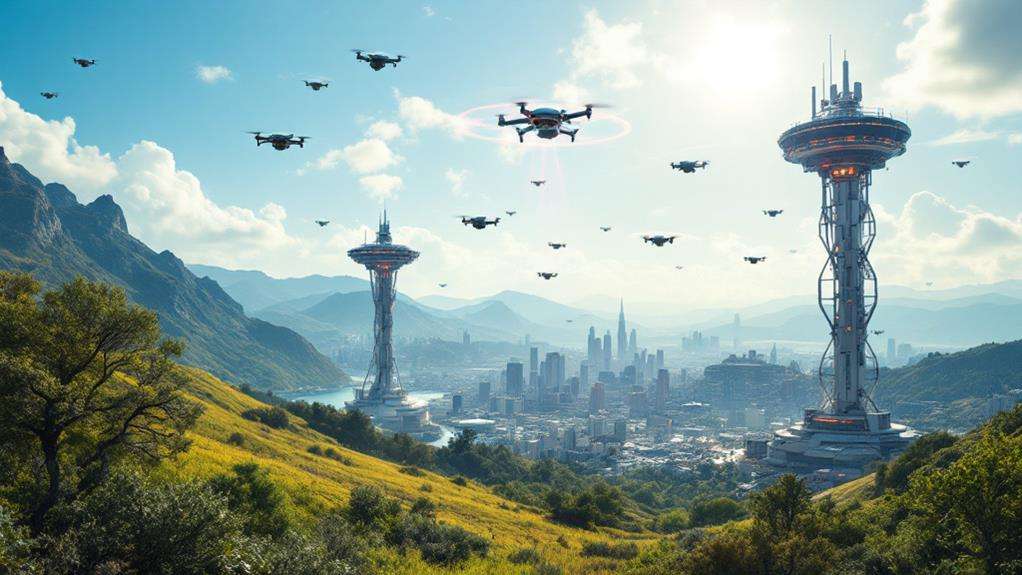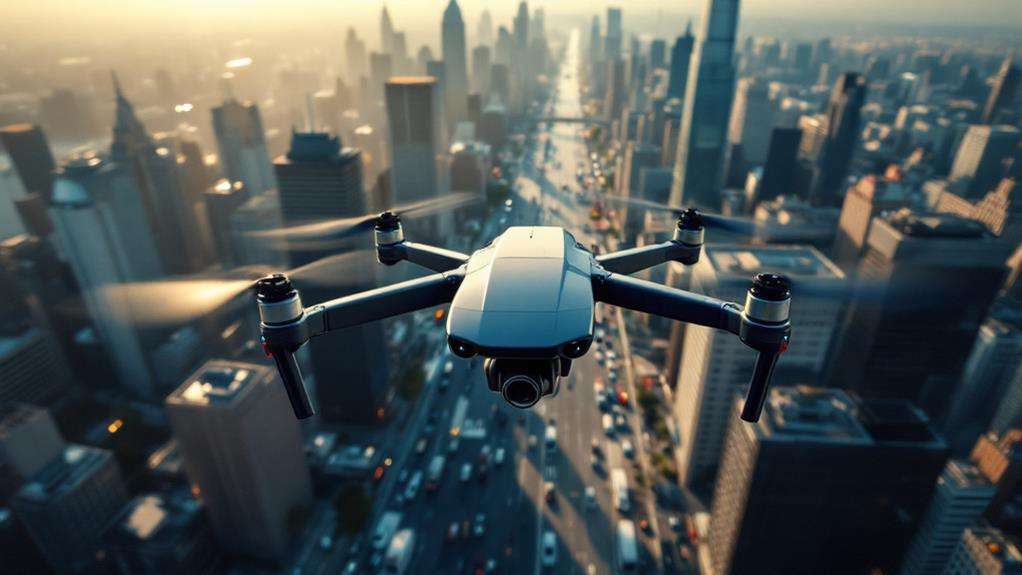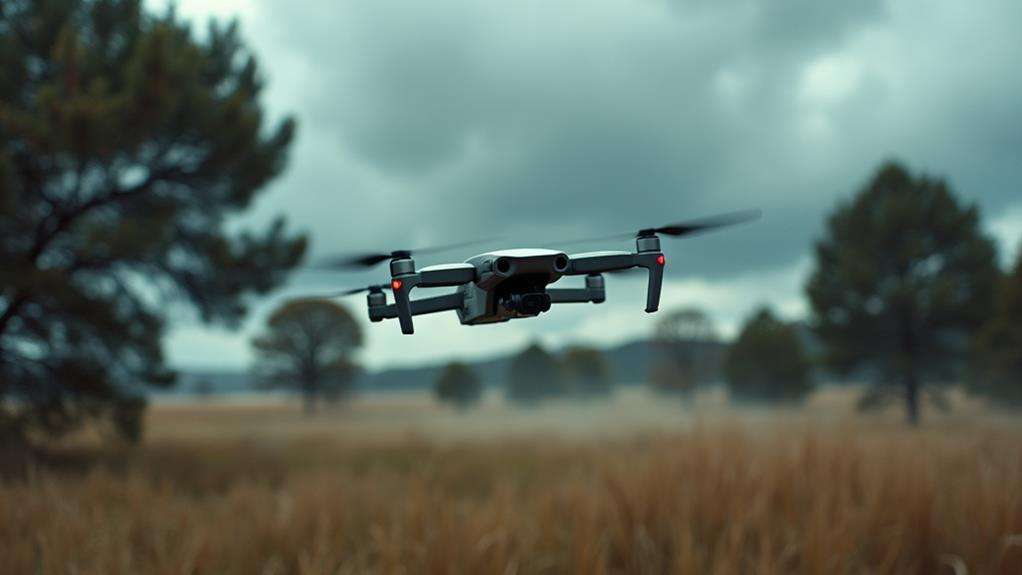Is There a Way to Detect Drones?

You can detect drones using several technologies. RF detection captures communication signals from up to 10 miles away. Radar differentiates drones from other objects, providing precise locations. Visual tracking with PTZ cameras offers real-time monitoring, while acoustic sensors detect their unique sounds. Combining these technologies enhances accuracy and reduces false positives. Implementing such systems isn't just about technology but also involves complying with legal regulations, ensuring privacy, and planning strategic placements for optimal coverage. Considerations like these are crucial for securing areas against unauthorized drone access. To explore this further, you might find additional context and strategies helpful.
Key Takeaways
- RF detection captures communication signals between drones and operators, providing a reliable method for drone identification.
- Radar detection differentiates drones from other objects, offering precise localization and tracking capabilities.
- Visual tracking through PTZ cameras provides real-time evidence of drone activities, enhancing situational awareness.
- Acoustic sensors detect unique drone sounds, but their accuracy can be affected by environmental noise.
- Integrating multiple technologies improves detection accuracy and reduces the likelihood of false positives.
Importance of Drone Detection
While drones offer numerous benefits, detecting them is crucial for protecting critical infrastructure like airports, stadiums, and prisons. These areas are vulnerable because drones can easily bypass traditional security measures. Implementing a reliable drone detection solution is essential to detect drones and mitigate potential threats. By using optical and infrared sensors along with RF sensors and other technologies, security teams can enhance airspace security, ensuring they locate and track drones effectively.
Understanding drone threats is vital for maintaining safety and operational effectiveness. With the rise in recreational and commercial drone use, the demand for robust drone detection solutions has increased. These systems provide real-time data, which helps security teams address potential risks and prevent incidents, like collisions during aircraft takeoffs and landings.
Compliance with federal regulations is also a key consideration for organizations integrating counter-drone technology. Adhering to these rules ensures that drone detection systems operate within legal boundaries while enhancing situational awareness in sensitive areas. By maintaining constant vigilance, you can protect critical infrastructure from unauthorized drone activity, safeguarding both property and lives. In doing so, your organization not only ensures airspace safety but also upholds public confidence in the security of these vital locations.
Technologies for Identifying Drones
In the rapidly evolving landscape of drone technology, employing advanced detection methods is crucial for identifying and tracking unauthorized drones. Drone detection systems use various technologies to effectively detect and track drones, ensuring the safety of restricted airspace. RF detection is a powerful tool, capturing communication signals between drones and their operators over a range of 1-10 miles. This helps you identify multiple drones simultaneously and maintain a robust drone monitoring setup. Additionally, automated conflict resolution systems are being developed to minimize collision risks and enhance operational safety. Radar detection plays a pivotal role by utilizing high-resolution systems to accurately differentiate drones from other objects. It provides precise localization and size identification, essential for a reliable counter-drone system. Visual tracking, incorporating PTZ cameras, offers real-time visual evidence of drone incidents, enhancing situational awareness. These cameras allow you to focus on specific areas and identify drone activities actively. Additionally, acoustic sensors add another layer by capturing the unique sounds of drones, although environmental noise can affect their accuracy. By integrating these technologies—RF, radar, and visual tracking—you can enhance detection accuracy and reduce false positives. This multi-faceted approach ensures a comprehensive strategy to detect and track drones effectively, safeguarding your airspace from unauthorized intrusions.
Implementing Detection Systems
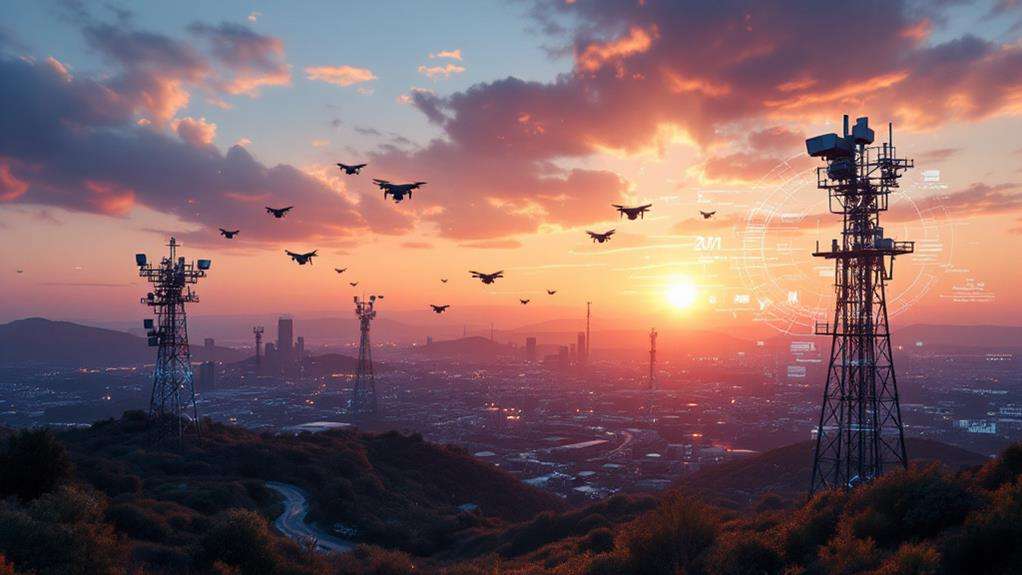
Building on the technologies for identifying drones, implementing detection systems requires a strategic integration of multiple technologies to bolster overall detection capabilities. By incorporating RF signals, radar, and visual tracking, you can create a robust network capable of identifying drones and assessing potential threats. RF analyzers, with their 1-10 mile range, serve as a cost-effective foundation, helping you detect drones' locations and identify any malicious intent.
To enhance accuracy, you should layer these RF detection systems with PTZ cameras. This combination allows for visual confirmation, significantly reducing false positives. By integrating drone detection software, you can streamline real-time monitoring and efficiently manage data from various sensors. This software facilitates comprehensive airspace management, ensuring you stay informed about any drone activity.
Furthermore, your detection systems should include regular assessments to adapt to evolving threats. This ongoing evaluation helps keep your systems effective and aligned with current standards. Leveraging multiple technologies not only strengthens your ability to identify drones but also provides a structured approach to managing airspace. By implementing these systems thoughtfully, you can maintain a vigilant eye on the skies, mitigating any risks posed by unauthorized drones.
Legal and Regulatory Considerations
Effectively deploying drone detection systems often requires navigating a complex web of legal and regulatory considerations. Compliance with local laws is crucial since legal frameworks can vary significantly by region. You must ensure that your drone detection efforts align with the Federal Aviation Administration (FAA) regulations in the U.S., which govern UAV operations. Adhering to these guidelines not only supports legal compliance but also minimizes potential liability issues, particularly concerning collateral damage.
| Consideration | Key Points |
|---|---|
| Legal Compliance | Adhere to FAA guidelines and local laws. |
| Privacy Concerns | Avoid unauthorized surveillance that may infringe on rights. |
| Law Enforcement | Collaborate with authorities for enhanced compliance and response. |
| Liability Issues | Understand potential collateral damage from drone monitoring efforts. |
Privacy concerns also play a critical role, as unauthorized surveillance could infringe on individual rights. By collaborating with law enforcement, you can enhance your legal compliance and ensure appropriate responses to detected drone activities. It's essential to understand the liability issues that could arise from drone monitoring, especially if any neutralization efforts lead to unintended consequences. Navigating these regulations requires thorough planning to avoid pitfalls and maintain lawful operations in drone monitoring.
Counter-Drone Strategies
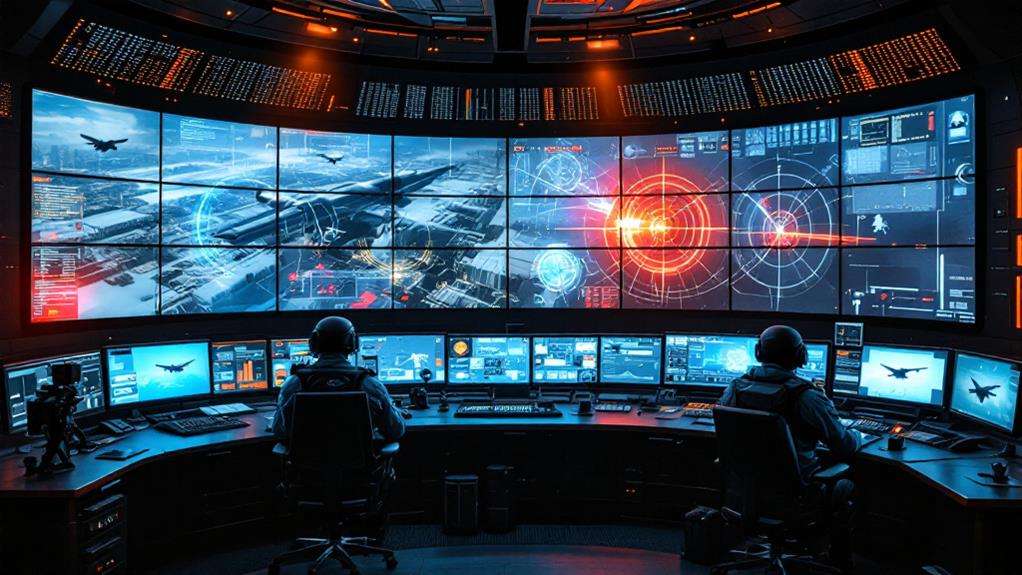
When it comes to counter-drone strategies, employing a mix of technologies like radar, RF analysers, and optical sensors is key to enhancing detection capabilities across various environments. You'll find that RF analysers are particularly effective for drone detection by picking up communication signals between drones and their operators. This method is both passive and cost-effective, making it a smart choice for identifying drone activity. Radar technology complements this by offering long-range detection, tracking smaller objects like drones, though it sometimes struggles with false positives from birds.
Advanced neutralization methods play a critical role in counter-drone strategies. RF jammers and cyber takeover systems aim to disrupt or even gain control over unauthorized drones, effectively neutralizing threats without causing unnecessary damage. Integrating command and control software is crucial here, as it processes data from various detection systems, allowing security teams to respond rapidly to drone threats.
Incorporating these technologies ensures a more comprehensive security approach. By blending these tools, you can stay ahead of potential drone threats, making your counter-drone strategies robust and adaptable to different scenarios. This multi-faceted approach is essential for maintaining security and peace of mind in today's increasingly drone-populated skies.

